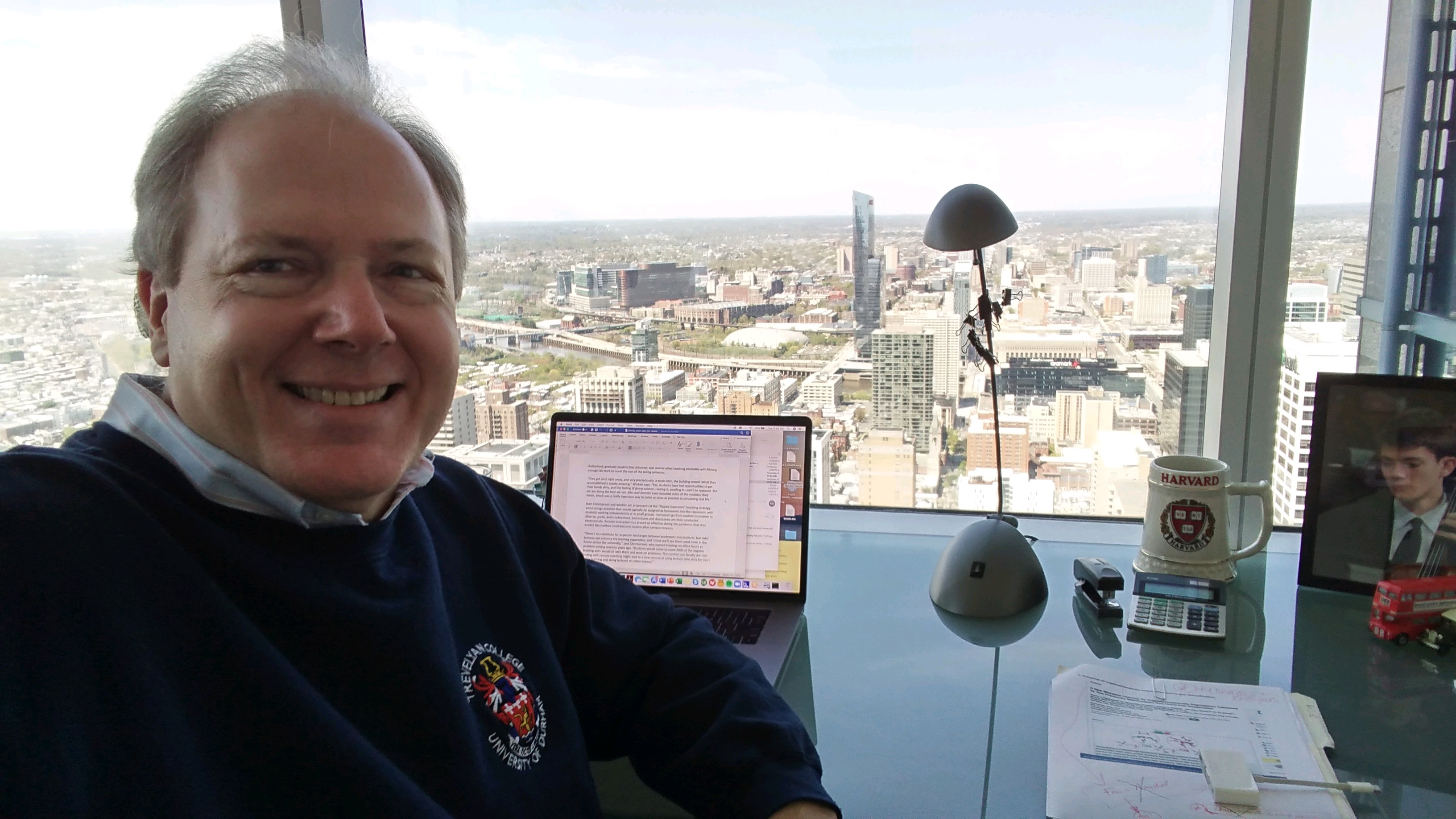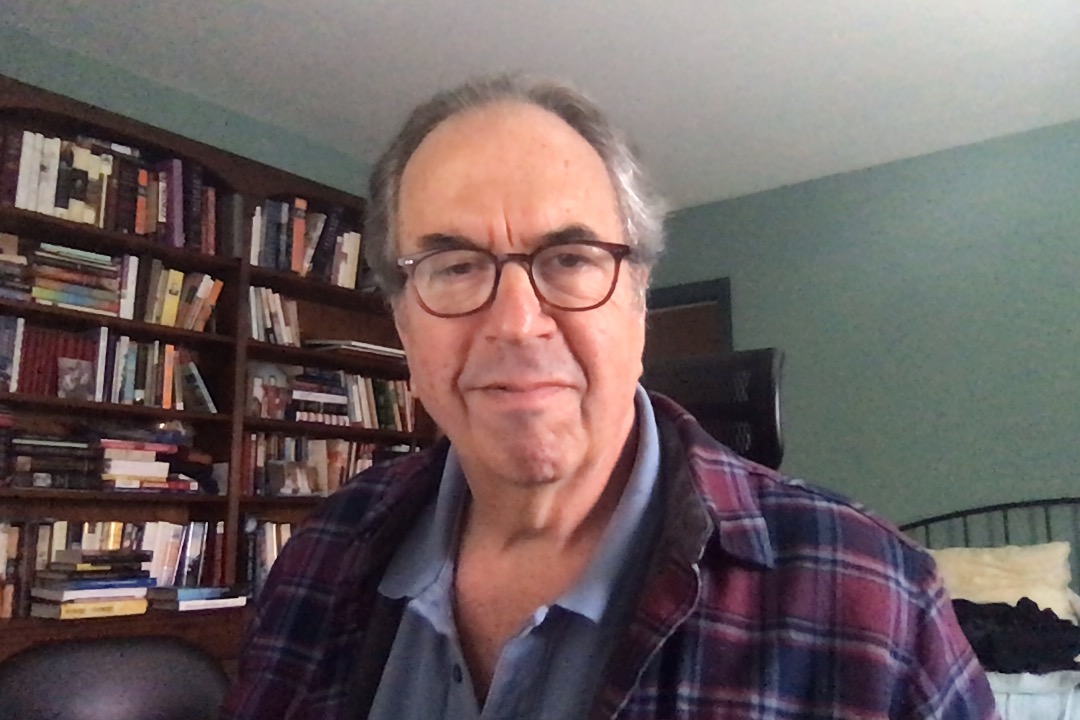Every so often, David Christianson posts a chemistry problem on his laboratory’s Facebook page, promising a Ben & Jerry’s field trip to the first student—past or present—who comments with the correct solution.
These days, the winners’ ice cream rewards are on hold as social distancing measures stemming from the COVID-19 crisis endure.
Delayed desserts are hardly the only effect the coronavirus has had on chemistry students at Penn. When the pandemic resulted in a campus-wide shut-down, Christianson, Roy and Diana Vagelos Professor in Chemistry and Chemical Biology and Department Chair, and his colleagues faced a particularly daunting challenge: How could they convert lab courses to an online platform?
“Lecture-based courses can transition almost seamlessly, but laboratory work is inherently hands-on. Not being able to do experiments in a wet laboratory, where we handle chemicals, is an incredible disadvantage for students as well as for organic chemists, inorganic chemists, physical chemists, and biochemists,” he says.
So far, in terms of research, Christianson and his own lab group have been lucky. They study the structure and function of enzymes using X-ray crystallography, a technique they can control from a distance using computers. Since they’d just amassed a large collection of data before campus closed, they’ve been able to continue their analysis from home.
“Can we do this indefinitely? No. We will reach an end point if this stretches beyond a couple months,” he says. “And others in our department whose work does not involve the use of computers or remote facilities have already been hit very hard.”
Among them is Jeffrey Winkler, Merriam Professor of Chemistry and Undergraduate Chemistry Chair, a synthetic organic chemist whose research has been interrupted.
“We can accomplish some planning, writing things up for publication, preparing grant applications. But in terms of experimental work—nothing,” Winkler says. However, his own inability to generate data is a secondary concern. “The biggest negative impact is on our students and postdocs. They are on a limited timeframe and feel enormous pressure to get work done.”
Every teaching lab experiment has two major parts: getting data and analyzing data. Shortly before laboratories officially closed, Winkler sensed impending restrictions and encouraged his colleagues to capture experiments on video. If students could witness the process of data collection from home, he reasoned, they could analyze it like they normally would. He credits general chemistry Senior Lecturer Jenine Maeyer; organic chemistry Lecturer Jennifer Rutherford; graduate student Mac Schumer; and several other teaching assistants with filming enough lab work to cover the rest of the spring semester.
“They got on it right away, and very precipitously, a week later, the building closed. What they accomplished is totally amazing,” Winkler says. “Yes, students have lost opportunities to get their hands dirty, and the feeling of doing science—seeing it, smelling it—can’t be replaced. But we are doing the best we can. Mac and Jennifer even included video of the mistakes they made, which was a really ingenious way to come as close as possible to simulating real life.”
Both Christianson and Winkler are proponents of the “flipped classroom” teaching strategy, which brings activities that would typically be assigned as homework into the classroom, with students working independently or in small groups. Instructors go from student to student to observe, guide, and troubleshoot, and lectures and discussions are then conducted electronically. Remote instruction has proved so effective during the pandemic that they predict this method could become routine after campus reopens.
“There’s no substitute for in-person exchanges between professors and students, but video lectures can enhance the learning experience, and I think we’ll see them used more in the future across the university,” says Christianson, who started treating his office hours as problem-solving sessions years ago. “Students would come to room 2000 of the Vagelos Building and I would sit with them and work on problems. The comfort our faculty are now finding with remote teaching might lead to a new normal of using lecture time slots for more active learning and doing lectures on video instead.”
Until that “new normal” unfolds, Christianson remains optimistic about his department’s ability to overcome current challenges. They’re in a good place, he notes, because most chemical samples can be stored safely for extended periods of time. Additionally, funding agencies including the National Institutes of Health and the National Sciences Foundation have expressed willingness to adjust deadlines for grant applications and research reports.
“We teach our students to be resilient and to adapt,” he says. “Until we can get back to doing what we love, we will keep moving the ball forward.”




